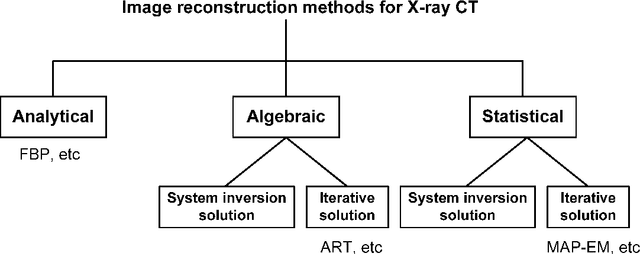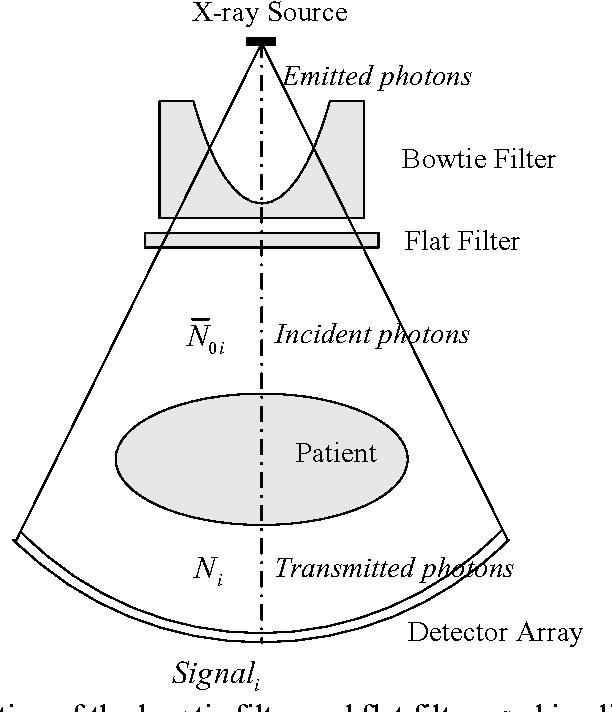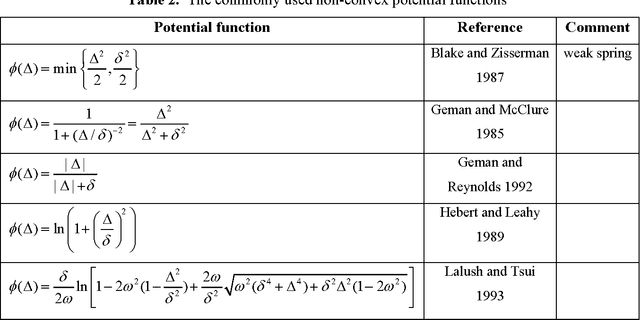Statistical models and regularization strategies in statistical image reconstruction of low-dose X-ray CT: a survey
Paper and Code
May 14, 2015



Statistical image reconstruction (SIR) methods have shown potential to substantially improve the image quality of low-dose X-ray computed tomography (CT) as compared to the conventional filtered back-projection (FBP) method for various clinical tasks. According to the maximum a posterior (MAP) estimation, the SIR methods can be typically formulated by an objective function consisting of two terms: (1) data-fidelity (or equivalently, data-fitting or data-mismatch) term modeling the statistics of projection measurements, and (2) regularization (or equivalently, prior or penalty) term reflecting prior knowledge or expectation on the characteristics of the image to be reconstructed. Existing SIR methods for low-dose CT can be divided into two groups: (1) those that use calibrated transmitted photon counts (before log-transform) with penalized maximum likelihood (pML) criterion, and (2) those that use calibrated line-integrals (after log-transform) with penalized weighted least-squares (PWLS) criterion. Accurate statistical modeling of the projection measurements is a prerequisite for SIR, while the regularization term in the objective function also plays a critical role for successful image reconstruction. This paper reviews several statistical models on CT projection measurements and various regularization strategies incorporating prior knowledge or expected properties of the image to be reconstructed, which together formulate the objective function of the SIR methods for low-dose X-ray CT.
 Add to Chrome
Add to Chrome Add to Firefox
Add to Firefox Add to Edge
Add to Edge